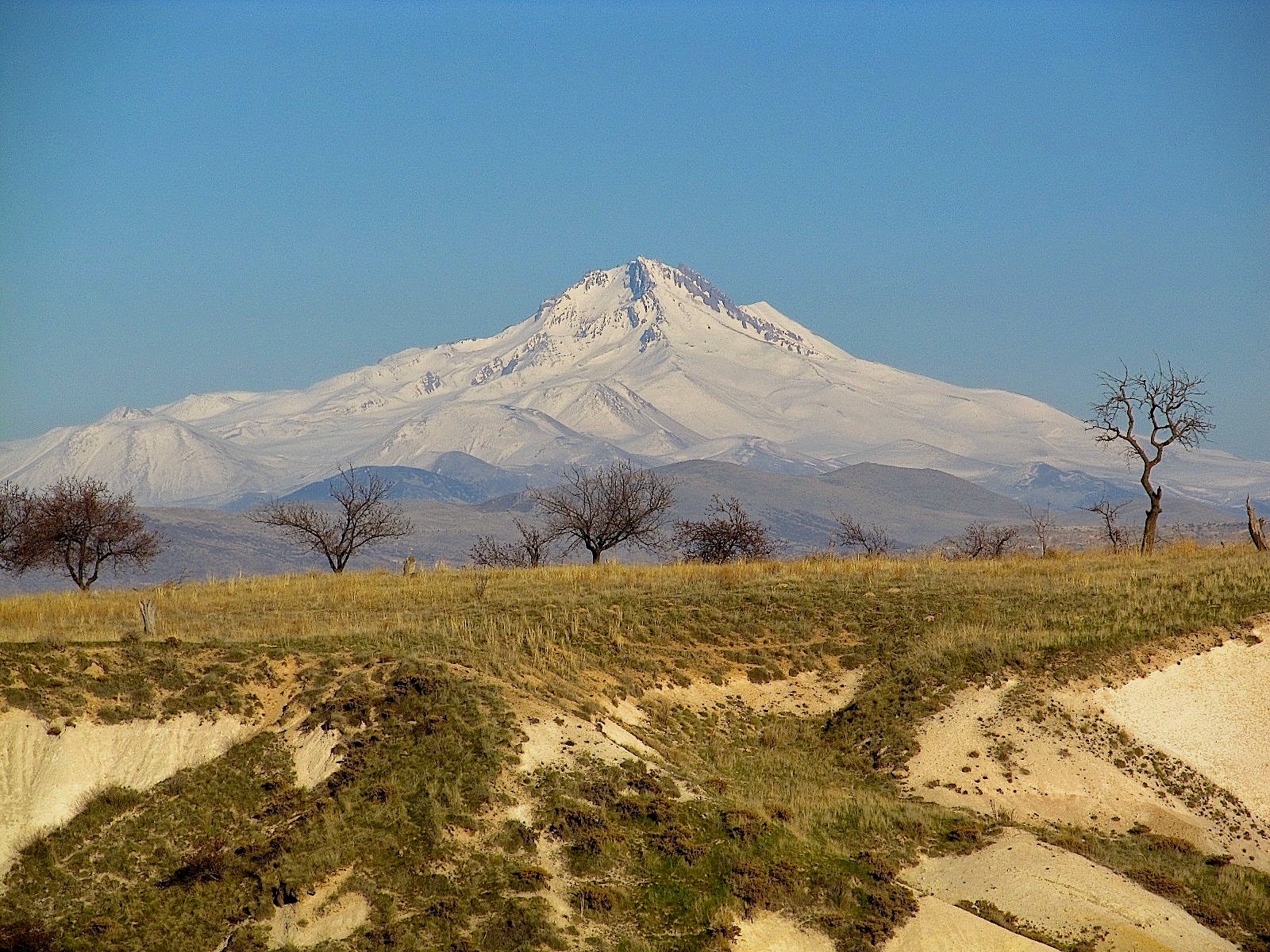During spring break Judith travelled with 2 colleagues to Turkey. They flew first to the Cappadocia region and stayed for 3 nights in a cave hotel in the village of Goreme. The region is geologically unusual with rock formations and fairy chimneys in evidence everywhere as a result of lava flows from ancient volcanoes. This is the view from just outside Judith's room, taken in the early morning just as the hot-air balloons were rising from the valley floor. Apparently balloon travellers get a magnificent view of the landscape but neither Judith nor her colleagues were tempted.
Spring had sprung in Turkey but our first day in Cappadocia was windy and cold at -9 degrees. Ironically it was 10 above in Ulaanbaatar that day. On Day 2 we went on a tour of the area which included passage through and into some of the rock cut homes and churches dating back to the Byzantine era. The area was originally settled by the Hittites (1800 to 1200 BC), followed by the Persians, then the Romans. Early Christians took refuge in the region perhaps because there were so many safe places to hide. Underground churches date from the 4th to the 11th century.
Turkey is known for its beautiful carpets and they are in evidence everywhere. On that first cold day Judith and her friends spent a few hours in a carpet shop in Goreme that had been recommended to them, enjoying the ritual of selection over endless cups of Turkish tea. And yes, we did come away with carpets.
This is an extreme example of the results of lava flows that have occurred in the same place but have cooled at different rates and times.
We stopped for a walk on the trails in one of the many valleys. Our tour guide referred to this as "Imagination Valley" because many of the shapes of the fairy chimneys are reminiscent of real-life objects.
All of the openings in the rock faces are entrances to cave homes or churches that were carved out for use in centuries past. In most of the villages and towns there are bylaws in place that prohibit new buildings from using materials or colours that deviate from those of the natural landscape.
Across the street from a winery that we visited a vendor was selling these evil eye charms. According to superstition these charms are intended to reflect back any evil looks given by anyone who carries a negative force. Tourists buy them as souvenirs but superstitious Turks still believe in the malevolent force and display these charms in their homes and shops.
Long dormant, the volcanic Mt. Erciyes stands at 3916m.
We visited a number of sites that featured magnificent examples of frescoes and mosaics but none so concentrated and so beautiful as those in the Chora Church. The building itself dates back to the 11th century; it was sacked during the Fourth Crusade and restored and embellished during the Byzantine Renaissance period in the 14th century. Many historical sites in Istanbul have at least some portion of their edifices under restoration, evidence that the country takes its history and its art very seriously. In addition to the Chora Church we visited the Aya Sofya and the Blue Mosque. The Aya Sofya was built in 537 by the Roman Emperor Justinian. In 1453 it was converted to a mosque by Mehmet the Conqueror and was proclaimed a museum by Ataturk in 1935. The Blue Mosque, so called for its extensive interior use of blue tiles, is the unofficial name of the Sultan Ahmet Camii. It took 10 years to build (1606-1616) and features 260 windows, 6 minarets and an enormous courtyard.
Istanbul was in full bloom and early April is Tulip Festival time. There were mass planting of tulips everywhere as well as beds of hyacinths and pansies. After a visit through the Museum of Archeology we took a break at an outdoor café that looked over this park.
It took us awhile to realize that there were parakeets flying in and out of the trees in the park.
A visit to the Spice Bazaar is a treat for the senses! Many of the stalls carry a variety of merchandise but some are single item vendors like this olive seller. Samples may be tasted on request and just like the olives we felt we'd had only a small taste of Turkey in our 6 days there. Just enough to know that we'd like to return to capture some of the things we weren't able to fit into our short visit.












What an amazing place to visit. I do agree that someone could spend lots more time in that country but it looks like you did experience a variety of beautiful aspects of Turkey.
ReplyDeleteYour photos are stunning. What a beautiful country.
ReplyDelete